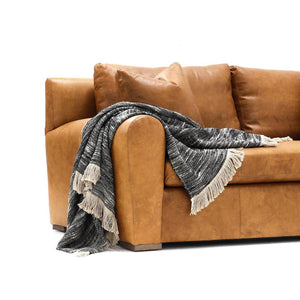Washing Machine Efficiency
Washing machine efficiency
When you're looking to purchase a new washing machine, we recommend everyone considers the ongoing water and energy costs from running your new appliance. Fortunately, these costs can be minimised by carefully choosing an efficient washing machine and by adjusting some of your washing habits.
Star ratings
The energy label, mainly found on the front of the machine, displays a star rating out of 6 and a Kilowatt figure (kWh). A machine with more stars displayed will consume less electricity per wash, making a sizeable difference to utility bills over the appliance's lifetime.
You can calculate the annual cost of a washing machine by multiplying your electricity rate by its kWh. If your rate is 20c and the machine’s kWh is 500, the annual cost of the machine will be $100. This is a simple way to compare washing machines in terms of efficiency.
Water rating labels display a star score out of 6, and a litres per wash measurement. Be sure to find a machine that matches your household size so that you can get the best wash results and minimise wasting unnecessary water.
Type of washing machine
Front loader washing machines, in general, are more energy and water efficient than top loaders, with some front loaders being rated 5 or 6 stars out of 6. While Front loaders are generally more efficient with water and energy, time spent washing is one of the downfalls as the cycles can take up to twice as long to perform compared to a a top loader.
Top loaders, of course, have their benefits but overall use more water and energy during their cycles. Due to their shape they can have larger capacities for clothing so can be suited for larger families. Generally have faster wash cycles, cutting the time the machine is running compared to the front loaders.
Programs and Capacity
The washing programs that you use will ultimately affect your water and energy bills. For example, washing with hot water on a cotton cycle will use more electricity than a wash with cold water. Over the lifetime of the machine this will make a noticeable difference to your utility bills. However, a hot wash is obviously ideal for some laundry such as sheets and towels so cannot always be avoided. When you have the ability to lower the wash temperature, try and do so depending on the contents of your load.
Some machines will feature special options such as speed settings that can shorten the washing time of a particular program, whilst still providing the same wash results. Although very handy to use occasionally, it is good to be aware, however, that using this option regularly (if it is available on your machine) will use a lot more energy than a regular cycle. If your washing machine has an eco or economy cycle, it’s great to use it when you can. Eco cycles are designed with energy saving in mind and, while they may take longer than a regular wash, they will benefit you in the long run.
Wait until you have a full load of washing before switching on your machine. By washing full loads the machine will spend less time running, thereby reducing electricity and water costs.
A full load is when the drum is approximately ¾ filled. Don’t overload the washing machine as it needs a bit of space to toss around and clean your items evenly.
Spin speed
Spin speed is measured by RPM (Revolutions Per Minute). Higher washing spin speeds push more moisture out of the load, meaning less time spent in the dryer for reduced energy costs.
If you are purchasing a new washing machine, consider the spin speed and what most of your washing consists of, whether that be everyday clothing, heavy items, or perhaps just light loads every few days. High spin speeds (1000 RPM or higher) work best for heavier items such as sheets and towels, but is not recommended for delicates or everyday clothing as it may damage the fabric or distort the shape.
The fastest front loaders are capable of reaching speeds up to 1600 RPM, while the fastest top loaders reach 1100 RPM.
Water Inlets
Front load washing machines will most often come with a single cold water connection hose only. The majority of top load washing machines, on the other hand, generally will have both a hot and cold water connection. Always be sure to check the specifications though to ensure that you are purchasing a machine that is suitable for the taps that you have at home, whether that be a single cold tap or both hot and cold water taps. Machines with a cold water only connection will heat their own water for the necessary cycles.
-
FAQs
-

How to order your lounge suite
There are different combinations of sofas you ... -

When Quality & Comfort Matter...
This section of our store admittedly took the l... -

Out with the old.. In with the new!
New Look Aren't you tired of that old style di... -

Quality at affordable prices with a reliable retailer..
Furniture is something you keep for years so it... -

Loyalty Program
We launched our loyalty program to really say...





